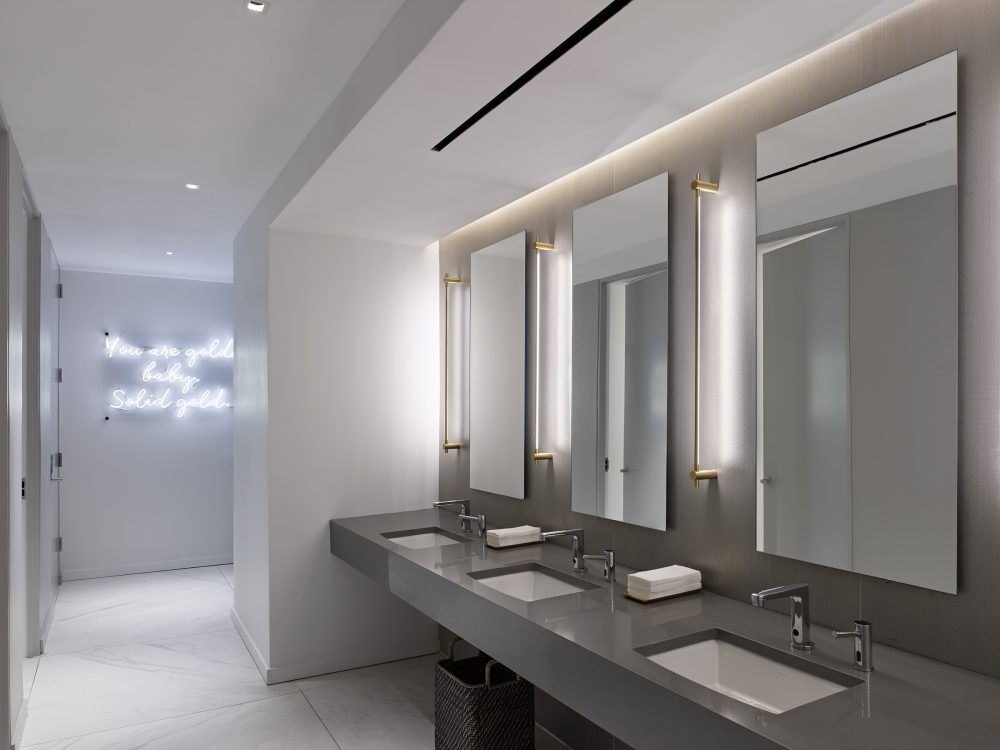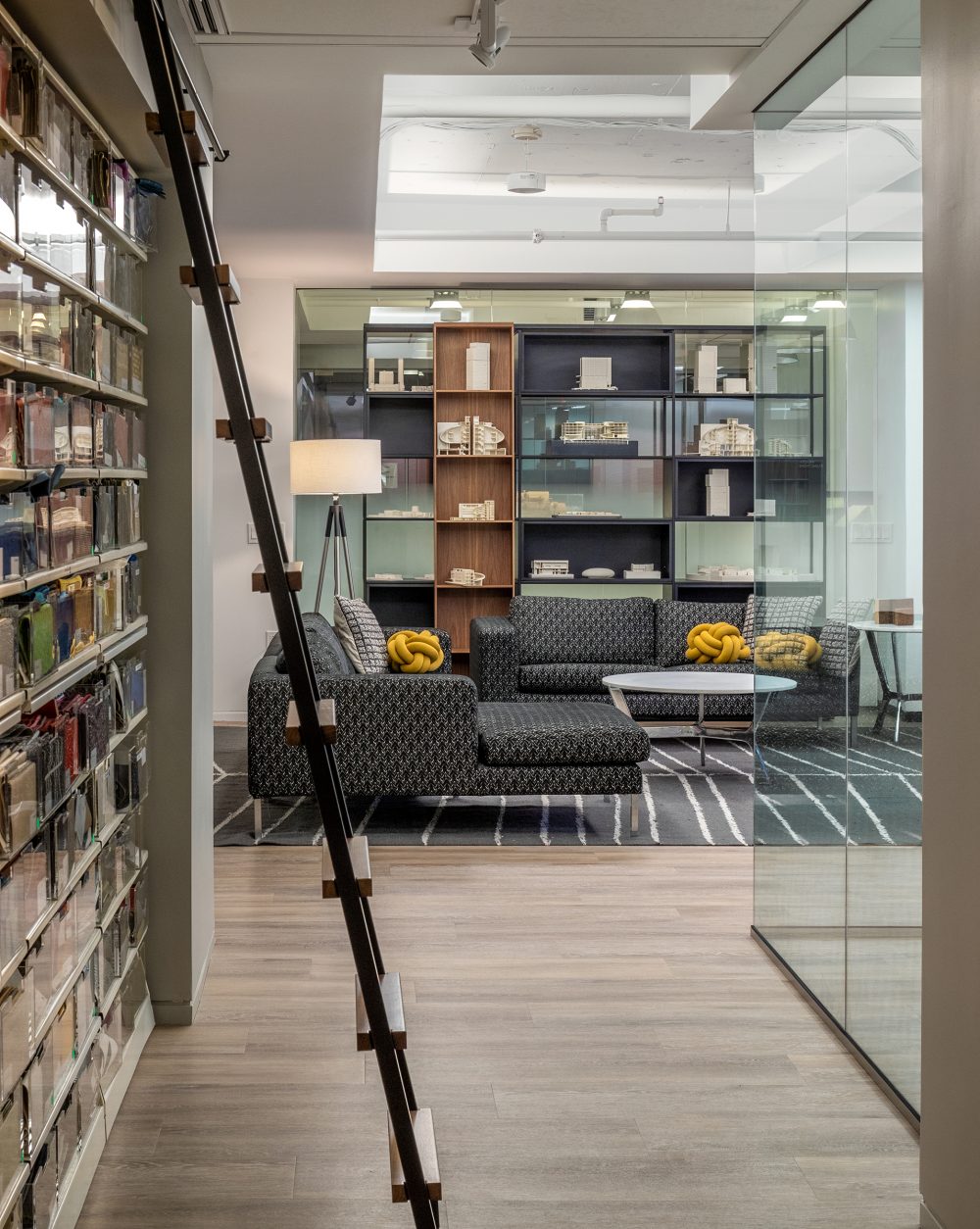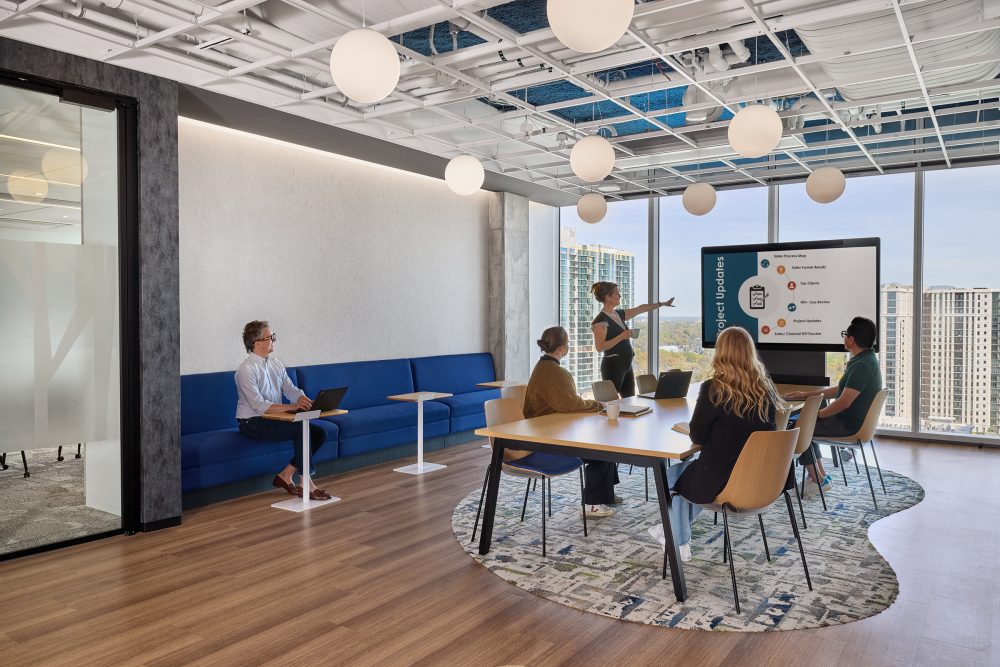We’re living in a time of uncertainty, where economic volatility, supply chain disruptions, and shifting costs from tariffs and global instability are affecting businesses across the board. In such an environment, leaning into what already exists becomes not just a sustainable choice, but a strategic one. Circularity encourages us to rethink how we approach design, finding added value in existing assets and reducing dependency on new materials. Beyond its environmental benefits, this approach inspires a culture of creativity and innovation, especially among designers and architects who are uniquely positioned to rethink how spaces are built, adapted, and reused.

flow, of course)! Photo Credit: Ben Rahn/A-Frame
As workplace designers and architects, we often focus on topics such as reducing greenhouse gas (GHG) emissions or achieving carbon neutrality in our projects. The circular economy offers an integral framework to further this paradigm shift, particularly in the interiors sector, where short life cycles and frequent renovations generate significant material waste. By adopting circular strategies such as re-use, repair, and refuse, workplaces can minimize harm and actively contribute to environmental restoration.
Circular economy principles go beyond meeting ESG targets—they reflect a fundamental shift in how we perceive and make the most of existing resources. They encourage us to uncover value in what we already have and inspire creative, often practical solutions to complex challenges.
Client Concerns: Aligning Circularity with Broader Goals
For clients, the appeal of circular economy principles extends beyond sustainability—they also help address a broad range of critical challenges and priorities. From building resilience to climate change impacts to meeting corporate Net Zero commitments, circularity supports the growing demand for practical, sustainable solutions. Clients are increasingly aware of the embodied and operational carbon footprints of their assets and are seeking ways to mitigate the risk of stranded assets and devaluation. The market is also placing a premium on more sustainable properties, driven in part by tenant and customer expectations for carbon-neutral spaces.

used one? Photo Credit: David Whitcomb
Digitization is also transforming the built environment. By integrating PropTech, smart building systems, and data-driven decision-making into circular workflows, it’s possible to unlock new levels of efficiency and insight. Meanwhile, shifting stakeholder expectations regarding space utilization and alignment with personal or corporate values are driving demand for more flexible, experience-led workplaces.
Coupled with increasingly stringent ESG regulations and the challenges of managing compliance, the need to adopt circularity is clear. Moreover, with an oversupply of commercial office space, rebalancing and rethinking portfolios has become a priority, and utilizing existing assets is simply common sense.
The Road Ahead: Scaling Circularity
To scale circular practices across workplace interiors, the industry must embrace collaboration and innovation. Local governments can play a pivotal role by introducing incentives for reuse, such as tax credits for materials salvaged during renovations or grants to kickstart regional market development. Manufacturers can design products with reuse in mind, offering take-back programs or refurbishment options. Architects and designers can leverage tools like BIM and tracking apps to identify material flows and integrate circular strategies into project workflows.

Despite the benefits of material innovations that reduce energy and carbon emissions, achieving true sustainability requires a systemic and cultural shift in how materials are used. Current practices often favor disposing of existing materials in favor of new ones, but the tools already exist to change this paradigm. For example, punch list apps, designed for tagging items and tracking construction tasks, can be repurposed to tag reusable materials at a project’s outset and circulate this information to relevant stakeholders. Such tools could enable better documentation, collaboration, and follow-through on reuse efforts.
Next up are initiatives that include mapping workflows to highlight intervention points within projects, showing how data captured at each stage can flow to stakeholders or jurisdictions to support incentive programs or regulations. This would also encourage manufacturers and small businesses to explore new business models that prioritize reuse.
By quantifying and documenting materials, including those often overlooked like light fixtures and electrical receptacles, designers can standardize processes for closing the loop and improve tracking of items that return to circulation.
Creating a Creative and Regenerative Future
The transition to circular workplace interiors represents a significant opportunity to move beyond carbon neutrality and toward regeneration. Circularity allows us to save costs, reduce environmental harm, and foster creativity in designing solutions that rethink the lifecycle of materials.
While challenges persist, such as fragmented lifecycle ownership and knowledge gaps, the tools to address them are already within reach. By embedding circular principles into the design process, we can reduce waste and create systems that are not only sustainable but restorative.
As designers and architects, we hold the power to shape the future.
Circularity isn’t just about environmental responsibility; it is about unlocking a world of possibilities where reuse, creativity, and collaboration redefine what’s possible.
It’s about designing spaces that don’t just meet today’s needs but inspire tomorrow’s solutions while responding to yesterday’s decisions. Let’s lean into what we have, think differently, and embrace the opportunity to leave the built environment better than we found it.

